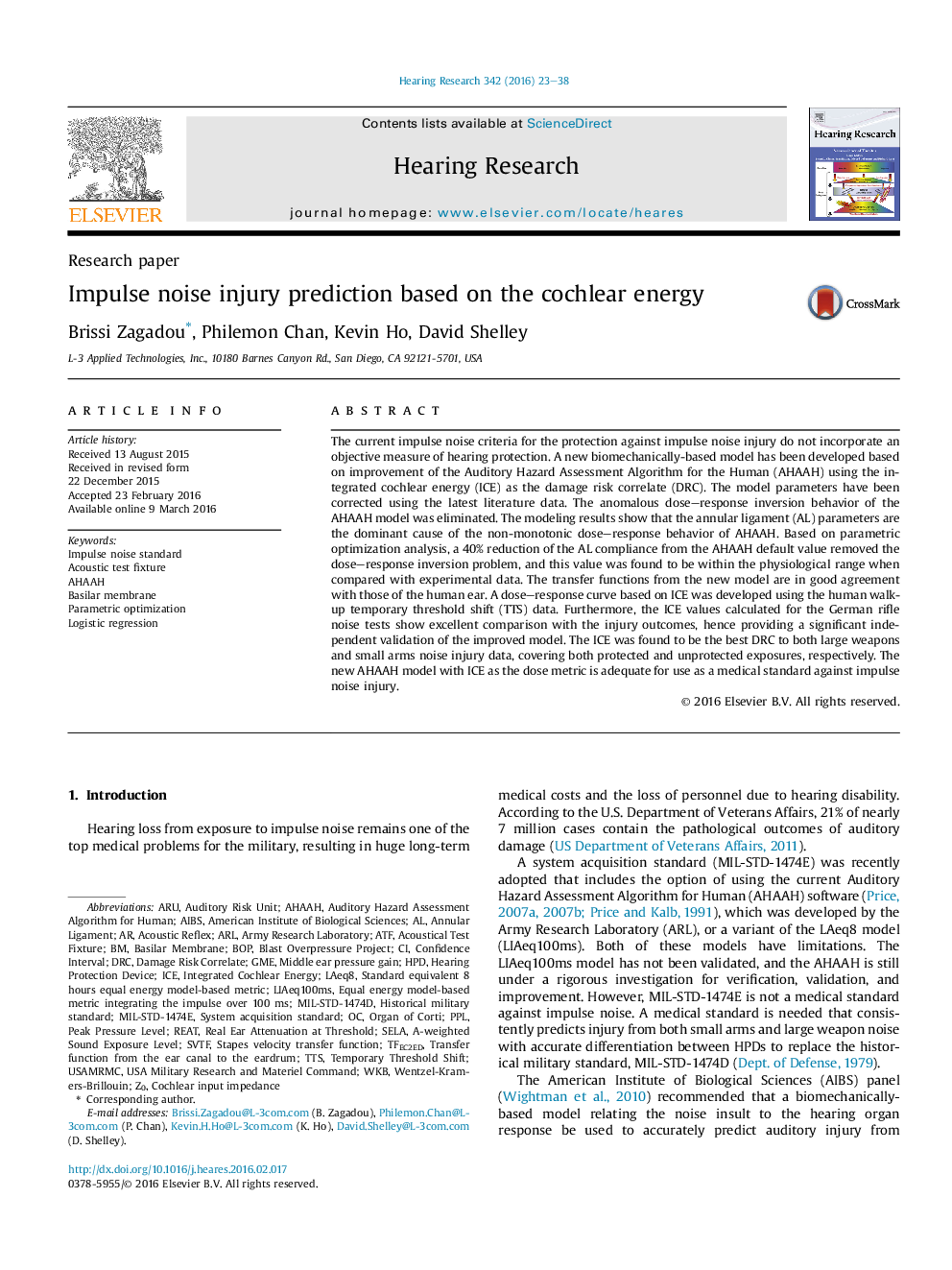| Article ID | Journal | Published Year | Pages | File Type |
|---|---|---|---|---|
| 5739419 | Hearing Research | 2016 | 16 Pages |
â¢The AHAAH model has been modified and validated against human injury data from impulse noise exposures.â¢The new AHAAH's dose-response curve established using large weapon noise data is independently validated by rifle noise data.â¢The integrated cochlear energy is identified as the best damage risk correlate for impulse noise injury.â¢The acoustical test fixture method developed to collect eardrum pressure data correctly accounts for the effects of HPDs.â¢The new AHAAH model can be used as the model-based medical standard against impulse noise injury.
The current impulse noise criteria for the protection against impulse noise injury do not incorporate an objective measure of hearing protection. A new biomechanically-based model has been developed based on improvement of the Auditory Hazard Assessment Algorithm for the Human (AHAAH) using the integrated cochlear energy (ICE) as the damage risk correlate (DRC). The model parameters have been corrected using the latest literature data. The anomalous dose-response inversion behavior of the AHAAH model was eliminated. The modeling results show that the annular ligament (AL) parameters are the dominant cause of the non-monotonic dose-response behavior of AHAAH. Based on parametric optimization analysis, a 40% reduction of the AL compliance from the AHAAH default value removed the dose-response inversion problem, and this value was found to be within the physiological range when compared with experimental data. The transfer functions from the new model are in good agreement with those of the human ear. A dose-response curve based on ICE was developed using the human walk-up temporary threshold shift (TTS) data. Furthermore, the ICE values calculated for the German rifle noise tests show excellent comparison with the injury outcomes, hence providing a significant independent validation of the improved model. The ICE was found to be the best DRC to both large weapons and small arms noise injury data, covering both protected and unprotected exposures, respectively. The new AHAAH model with ICE as the dose metric is adequate for use as a medical standard against impulse noise injury.
Graphical abstractDownload high-res image (440KB)Download full-size image
